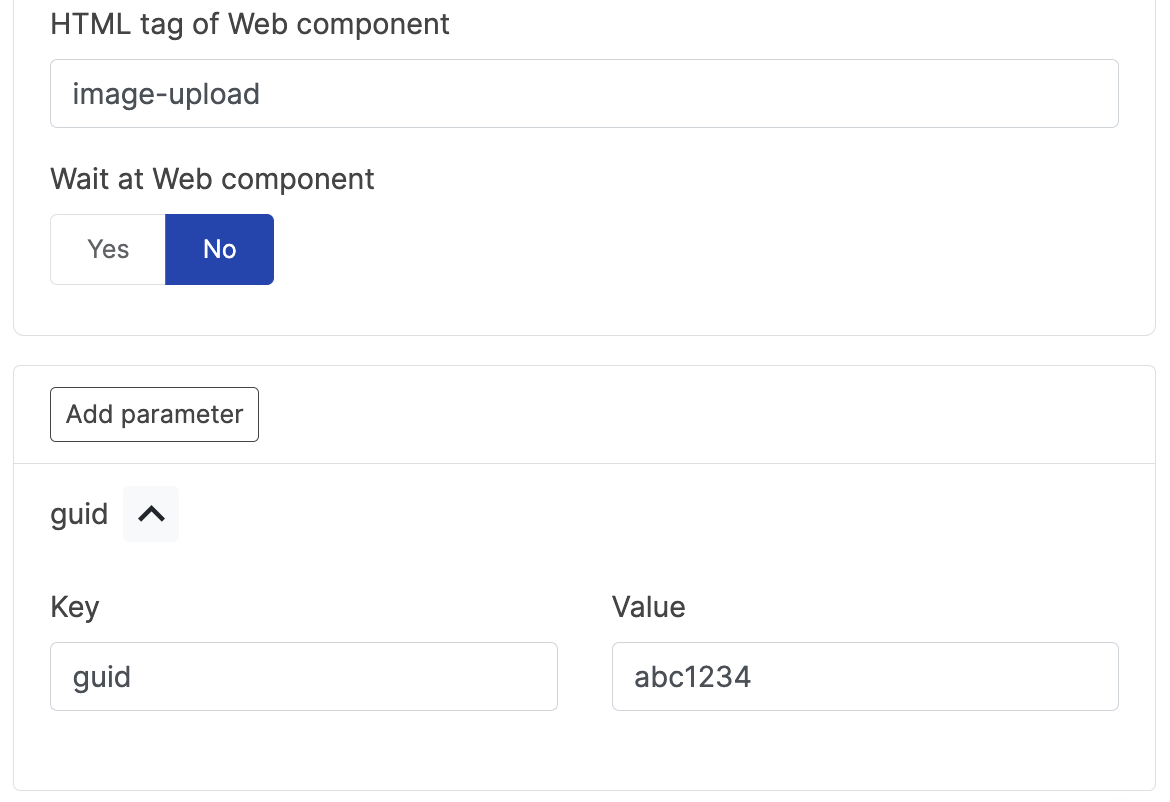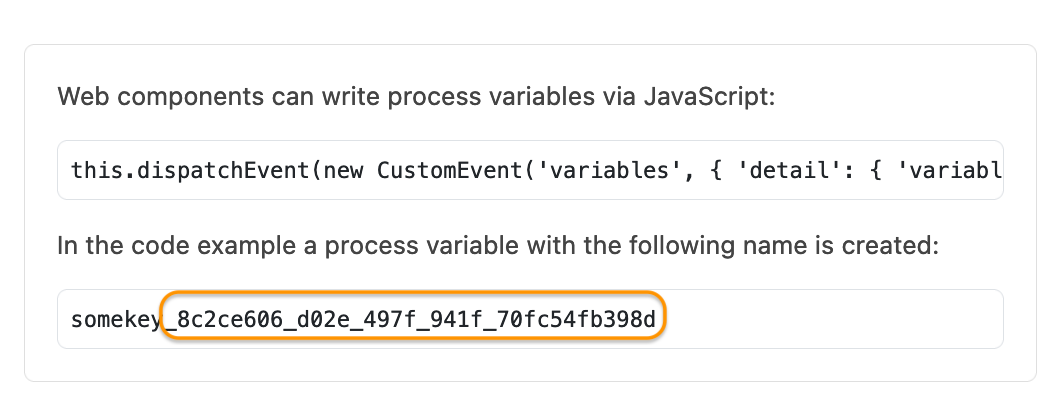Web Component Module
Introduction
Display a web component within the chat, allowing for interactive elements and custom features.
Typical Use Cases
Embed interactive web components like image uploaders, custom forms, or dynamic content within your chat.
How to Use the Module
Example
For example the following web component defines a web component with the tag image-upload. To integrate the web component in LoyJoy, (1) deploy the following JavaScript snippet as a file to a Web hosting of your choice, (2) enter the URL to this file in LoyJoy as the URL of web component and (3) enter image-upload as the HTML tag of the web component.
class ImageUpload extends HTMLElement {
constructor() {
super();
this.attachShadow({
mode: 'open'
});
// define the parameters you want to transfer from LoyJoy here
this.props = {
guid: ''
};
this.render = () => {
this.shadowRoot.innerHTML = `
<style>
div {
background-color: #eee;
padding: 10px;
border-radius: 5px;
width: 75%;
}
input {
padding-bottom: 10px;
}
</style>
<div>
<input class="fileupload" type="file" name="fileupload"/>
<button class="upload-button">Upload</button>
</div>
`;
var uploadButton = this.shadowRoot.querySelector('.upload-button');
uploadButton.onclick = async () => {
var fileupload = this.shadowRoot.querySelector('.fileupload');
var formData = new FormData();
formData.append('file', fileupload.files[0]);
await fetch(`https://httpbin.org/post?Action=new2&guid=${this.props.guid}`, {
method: 'POST',
body: formData
});
uploadButton.disabled = true;
// this call in combination with the continue: true allows the chat to continue after waiting
this.dispatchEvent(new CustomEvent('variables', {
detail: {
variables: {
filename: fileupload.files[0].name
},
continue: true
}
}));
};
};
this.setProps = () => {
var attribute = this.attributes['properties']
var props = attribute?.value && JSON.parse(attribute.value)
if (props) {
Object.keys(this.props).forEach(propKey => {
this.props[propKey] = props[propKey] || ''
});
}
};
}
connectedCallback() {
this.setProps();
if (!this._rendered) {
this.render();
this._rendered = true;
}
}
}
if (!customElements.get('image-upload')) {
customElements.define('image-upload', ImageUpload);
}
This web component uses a parameter called guid that can be defined in LoyJoy like so. The parameters are then passed to the webcomponent. Use this to pass individual data to your web components.

Stopping the chat at the web component, waiting for input
Use the option Wait at Web Component to wait for user input when the web component is displayed:

Inside the web component, the flow can be continued using the call this.dispatchEvent(new CustomEvent('variables', .... Note: you have to use { 'detail' : { ..., 'continue': true } } to activate continuing the chat flow.
Accessing variables written by web components
When your web component writes a variable such as filename in the example above, the variable name is not written as-is but with a suffix. You can find the correct suffix for you web component module at the bottom of the web component settings:

This suffix is added to ensure that variables from the potentially untrusted web component context cannot overwrite existing variables.